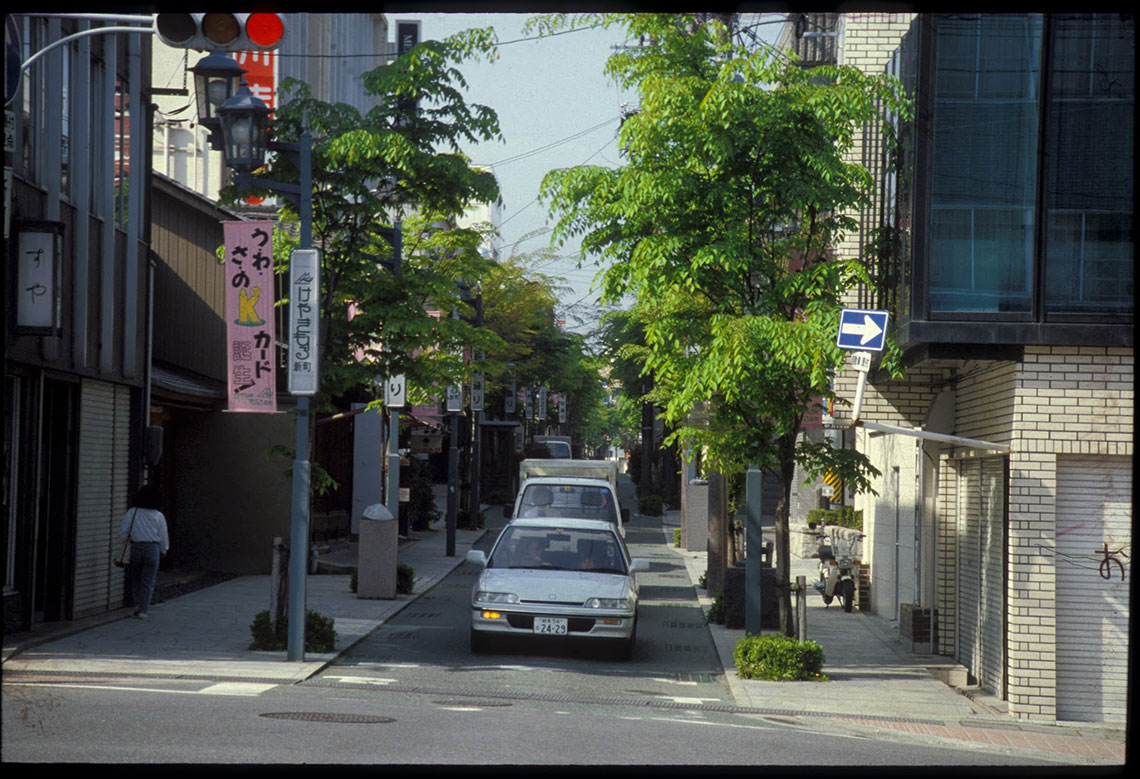One of the larger post-towns in the Edo period, Nakatsugawa had a population of 1220 in the 1790s. In addition to its post-town function, Nakatsugawa was also an important local market and retail center. The town stretched for over two-thirds of a mile along the highway, with numerous shops selling rice, sake, soy sauce, salt, clothing and other general supplies, as well as over 30 inns.
Today Nakatsugawa continues to thrive as a market town and a small industrial center, with a population of more than 53,000. One reason for this success is that the rail station is the terminus for a regular local train service to Nagoya, as well as being an express stop on the busy Nagoya-Matsumoto-Nagano trunk line.
Entering the town along the old Nakasendo, a number of Edo period shops and houses survive around the former masugata. These include a sake shop with the traditional sake brewers sign of a ball made from cedar cuttings. Nearer the center of the town old shops have given way to modern stores, although trees have been planted along the sidewalk recently, and priority is given to pedestrians. The appearance is rather like a narrow European boulevard, but the atmosphere is not entirely out of keeping with the old highway.

Large ball made of cryptomeria leaves
Leaving Nakatsugawa the road twists around another masugata, passing a replica of the official proclamation board (kosatsuba). For the next two and a half miles the highway makes a series of short but steep ascents and descents across a line of ridges running down from Mount Ena to the east. From the top of the last of these ridges a spectacular view is offered of the gorge above Ochiai and the modern bridge which crosses it. Descending into the valley, the post-town of Ochiai is reached.
Ochiai had a population of 370 people and 35 houses of which 14 were inns in 1841, rather dwarfed by its larger neighbor, Nakatsugawa. Ochiai is well preserved, with its waki-honjin in pristine condition. There are, however, no inns operating now.
Leaving Ochiai, there is a joyato just before a masugata which turns to the left. The highway starts to climb. Soon, it begins to run through rolling hills and there are some short steep climbs with increasingly spectacular views back toward Nakatsugawa and the Kiso river. The Kiso river again has very steep gorges in this area, so the Nakasendo keeps a short way to the south of it. Along the way is a small temple which once specialized in an herbal medicine that was said to be especially suitable for sword cuts. There is also a figure of Kannon, the Goddess of Mercy, especially dedicated to the spirits of the horses which were heavily used on this occasionally steeply inclined section of the road. There was considerable ishidatami laid to provide safe footing, some of which is original, although much has been replaced recently by the local historical society.

ishidatami

Ishtadami near Shinchaya
Shinchaya is located just across the border separating Gifu and Nagano prefectures. It is one of the tateba created as a resting place between post-towns. Today it still has two small tea houses, one dating back well over a hundred years. There was an ichirizuka on the outskirts of the town to the left of the road; it is described in Shimzaki Toson’s novel, ‘Before the Dawn’ but there is only a stone monument commemorating it now. The most famous spot in Shinchaya, however, is the rock which has been inscribed in the hand of Toson: ‘North from here is the Kiso road’.


